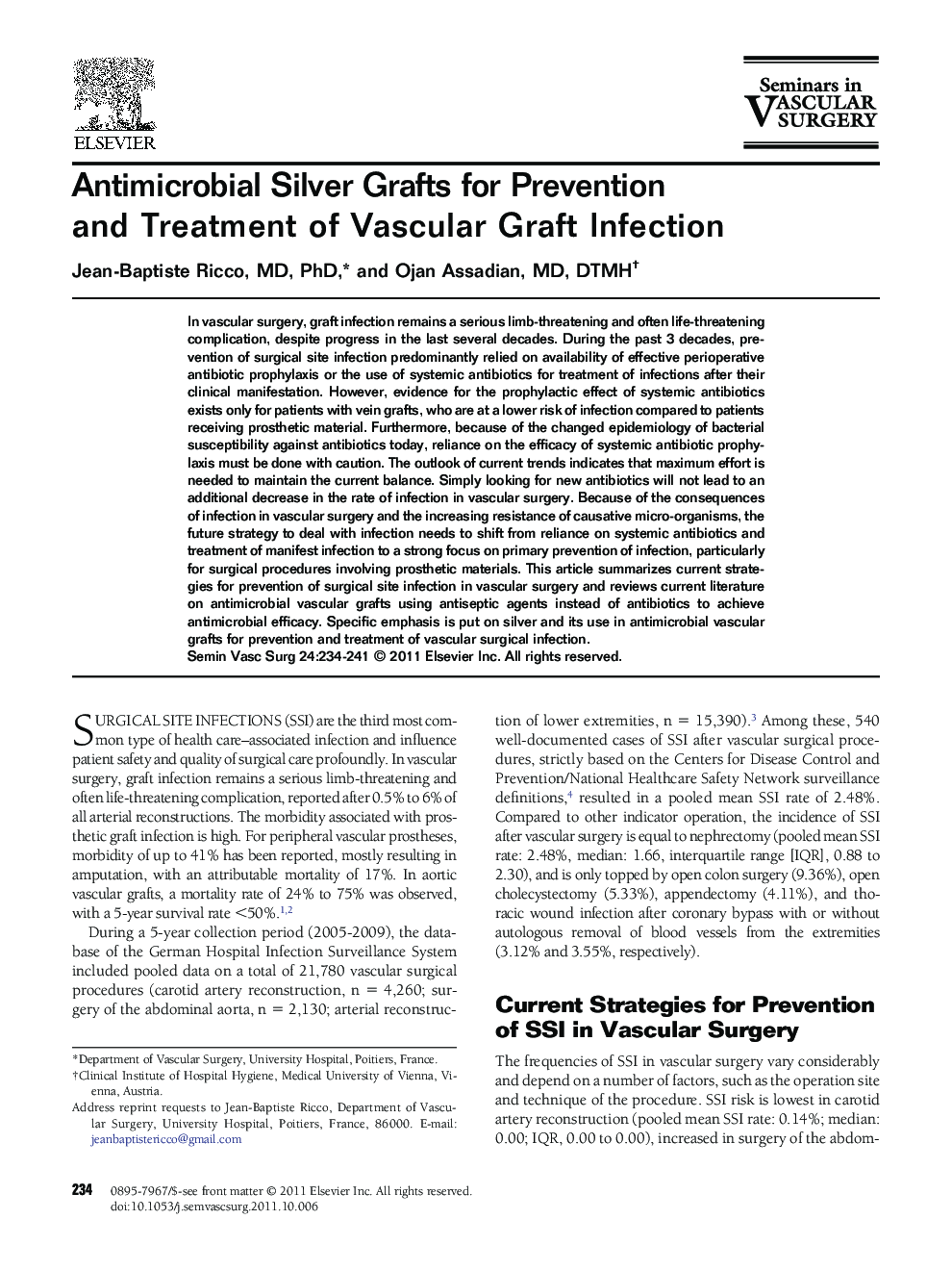| Article ID | Journal | Published Year | Pages | File Type |
|---|---|---|---|---|
| 3026144 | Seminars in Vascular Surgery | 2011 | 8 Pages |
In vascular surgery, graft infection remains a serious limb-threatening and often life-threatening complication, despite progress in the last several decades. During the past 3 decades, prevention of surgical site infection predominantly relied on availability of effective perioperative antibiotic prophylaxis or the use of systemic antibiotics for treatment of infections after their clinical manifestation. However, evidence for the prophylactic effect of systemic antibiotics exists only for patients with vein grafts, who are at a lower risk of infection compared to patients receiving prosthetic material. Furthermore, because of the changed epidemiology of bacterial susceptibility against antibiotics today, reliance on the efficacy of systemic antibiotic prophylaxis must be done with caution. The outlook of current trends indicates that maximum effort is needed to maintain the current balance. Simply looking for new antibiotics will not lead to an additional decrease in the rate of infection in vascular surgery. Because of the consequences of infection in vascular surgery and the increasing resistance of causative micro-organisms, the future strategy to deal with infection needs to shift from reliance on systemic antibiotics and treatment of manifest infection to a strong focus on primary prevention of infection, particularly for surgical procedures involving prosthetic materials. This article summarizes current strategies for prevention of surgical site infection in vascular surgery and reviews current literature on antimicrobial vascular grafts using antiseptic agents instead of antibiotics to achieve antimicrobial efficacy. Specific emphasis is put on silver and its use in antimicrobial vascular grafts for prevention and treatment of vascular surgical infection.
